29 Animals that Mate for Life: Monogamous Animals List
There’s a certain sweetness when it comes to animals that mate for life. Scarlet macaws, for example, will spend up to 50 years together. In this post, you’ll learn about monogamous animals, including birds, mammals, fish, crustaceans, even parasites.
Up to 90% of bird species are monogamous. When it comes to mammals, only about 5% of them stick to the same mate each breeding season. Sea creatures and reptiles are seldom monogamous, but there are exceptions.
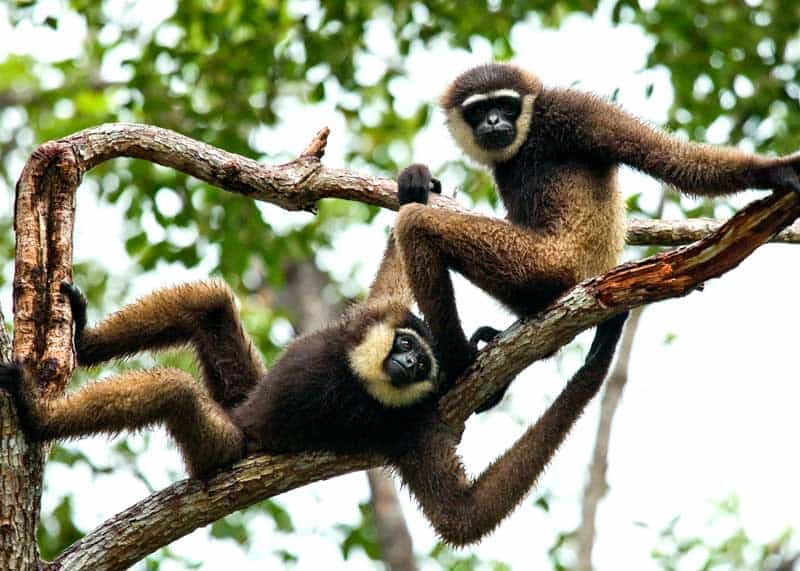
Why Do Some Animals Mate for Life? 4 Factors
While the idea of being with the same mate for life sounds romantic, in the animal world it is often done out of convenience.
Here are some reasons that these animals will mate for life.
- When it comes to birds, both parents are needed. The one bird incubates the eggs, while the other goes off in search of food. By the time the chicks are ready to leave the nest, it’s time for the adults to breed again. And who better to breed with than a partner who is already there, and has proved himself/herself to be a good parent?
- In other cases, having both parents around serves as a protection against predators. So rather than impregnating a female and leaving her to fend for herself, the male will stay and help raise the family.
- Another benefit is the time factor. Many species have elaborate mating rituals, where the male spends much time trying to win over a female. And after all of his effort, the female may not even be interested. Staying together for life allows the pair to get straight to breeding when the time comes, instead of trying to win over a new mate each year.
- There may also be an emotional component. This is evident in their excitement when catching a glimpse of their mate after a time apart. It can also be seen in their distress when a mate passes away.
29 Animals that Mate for Life
Below you will find 29 examples of animals that mate for life.
Some of them have some pretty special and adorable ways of taking care of their mate.
1. Eurasian Beavers (Castor fiber)
Unlike their North American relatives, Eurasian beavers are monogamous.
They even share household responsibilities like parenting duties, maintaining their dams and lodges, and guarding their territory. Plus, they’re cute to look at.
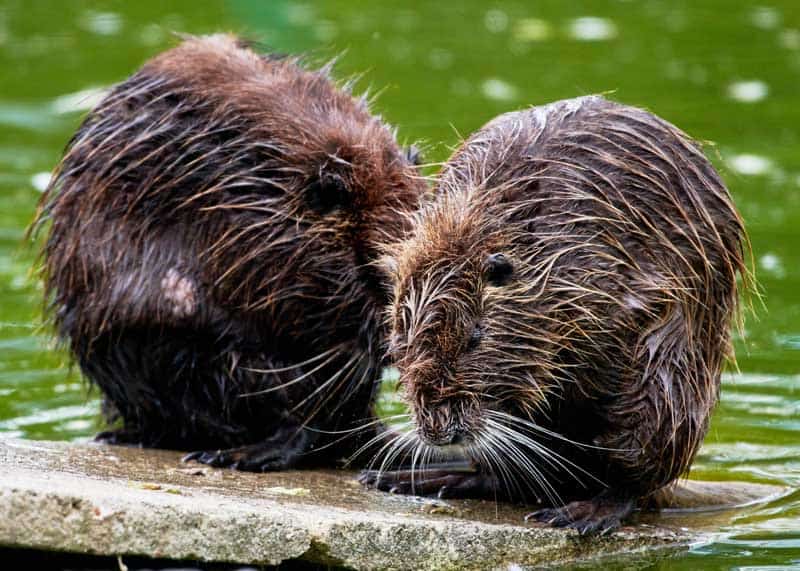
2. Wolves (Canis lupus)
A wolf pack typically consists of a mated pair and their offspring from the last few years.
After giving birth, mama wolf will not leave the den for several weeks, relying on her mate to bring her food. Papa wolf also helps in training the pups.
Canis lupus is commonly known as grey wolf or gray wolf. There are 36 subspecies of wolves.
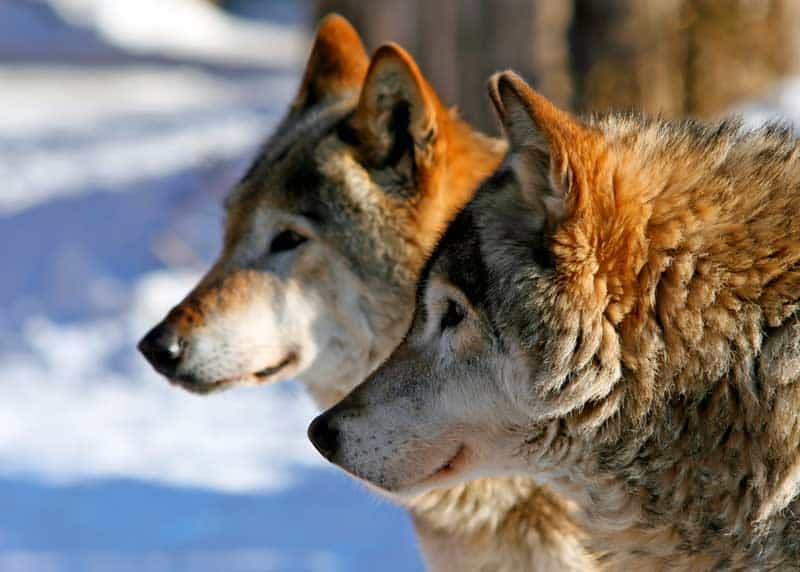
3. Gibbons (Hylobatidae family)
Do you and your significant other share a special song? Gibbons are known as talented singers, making the most complex songs of any land mammal.
Males and females will often sing solos before meeting their mates. Once paired, the two will create a duet that serves to strengthen the bond between them.
This same duet may be sung during grooming time, or when they are out of sight of each other. Sometimes the children will even join in.
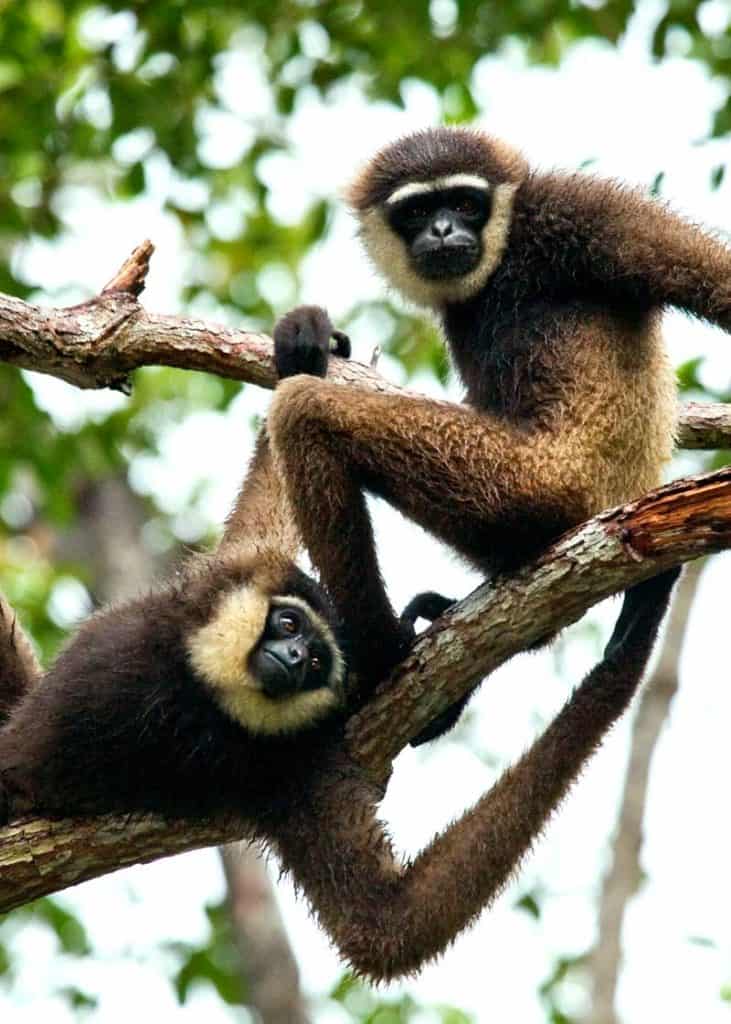
These tailless apes usually stay together for life, although at times an “affair” or a “divorce” does occur.
4. Swans (Cygnus cygnus)
Swans mate for life and often form bonds even before reaching sexual maturity.
While a swan will typically begin breeding between the age of 4-7, they may have met their mate years before that (as young as 20 months). It’s kind of like getting married to your best friend from school.
Swans stay together year-round, not just during the breeding season. They even migrate together.
When the time comes, the male will help to build the nest, and take his turn incubating the eggs.
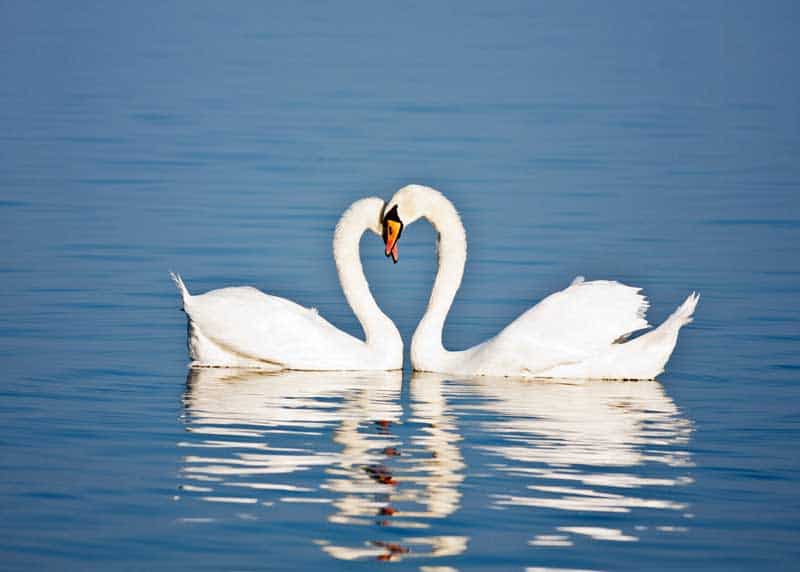
5. Sandhill Cranes (Antigone canadensis)
The Sandhill Crane has an elaborate courtship display. They dance, jump, flap their wings, and throw sticks and branches into the air.
And the best part is that these displays don’t end once they have become a mating pair.
In order to keep their bonds strong, the couple will join each other in synchronized calls.
And while dancing peaks during mating season, the couple may keep on dancing all year round. Once forming a pair, the two are never far apart.
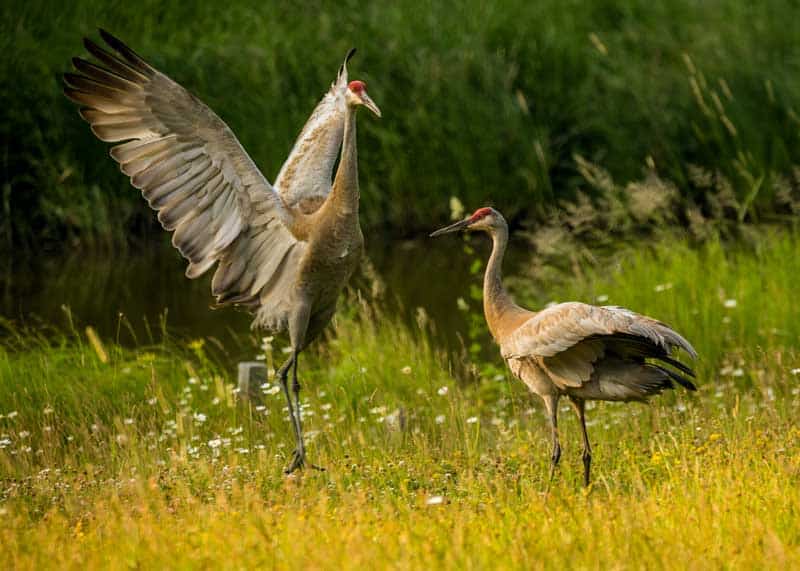
6. Prairie Voles (Microtus ochrogaster)
These cute little fluff balls may not live long (1-2 years in the wild), but they enjoy the time they have. Male and female partners like to cuddle and groom each other.
They will also share the responsibility of raising the offspring. And there are so many offspring! They have up to 4 litters a year, with up to 7 baby voles in each litter.
While they stay socially loyal to their mate, the male may have a “woman on the side” should the opportunity arise. But at the end of the day, he will always come home to his mate.
In fact, in 80% of cases where a vole loses his partner, he will spend the rest of his days alone.
7. Bald Eagles (Haliaeetus leucocephalus)
These eagles are not only large, they are loyal. While they may spend time apart during the year, when mating season arrives they always return to the same nest.
They will continue adding to their nest each season, resulting in some pretty impressive displays.
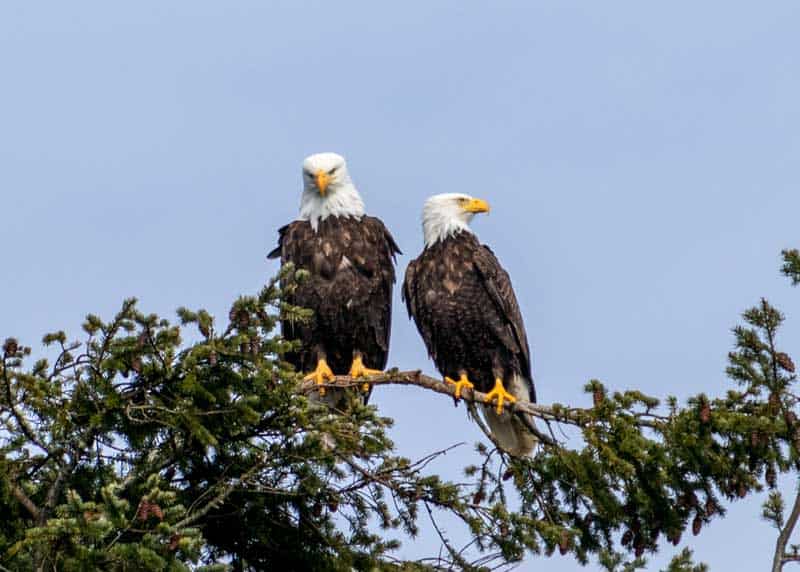
One such nest was found in St. Petersburg Florida. It was 9.5 feet across (2.9 meters), 20 feet deep (6 meters), and weighed nearly 6,000 pounds (2,721.6 kilograms). A testament to the life-long bond of the eagle pair.
After the eggs are laid, the male will help to incubate them. And it doesn’t stop there. He will also help in feeding the newly hatched chicks.
Learn more about eagles in our complete guide: 68 Types of Eagles
8. Coyotes (Canis latrans)
The coyote is found in North America and is a smaller relative of the wolf. When a female is ready to mate, she will scent mark and howl.
Up to seven potential suitors will follow her around for a month until she chooses one and rejects the rest. Once the bond is formed, coyote pairs are strictly monogamous.
Papa coyote is very active in taking care of any pups that the pair produces. He will feed, guard, and groom them.

9. Atlantic Puffins (Fratercula arctica)
These coastal birds have an adorable habit called billing.
After spending the winter alone on the ocean, the Atlantic Puffin will meet up with his partner. Both will wag their head from side to side, rubbing their beaks together.
They will then set about restoring their nest from the previous season. Unlike other birds who build their nests high up in the tree-tops, puffins burrow into the ground.
One mate will stand outside keeping guard, while the other uses its cute feet to dig out the soil.
Sometimes the mate will get showered in mud, as shown in the video below.
10. Geese (Branta canadensis)
Canadian Geese are very loyal. When a mate is injured or dying, its partner will stay behind to protect it- even if the rest of the flock is moving on.
They have even been observed mourning after the loss of a mate or their eggs.
A goose that has become widowed may separate itself from the flock, swimming in circles, while honking in dispair.
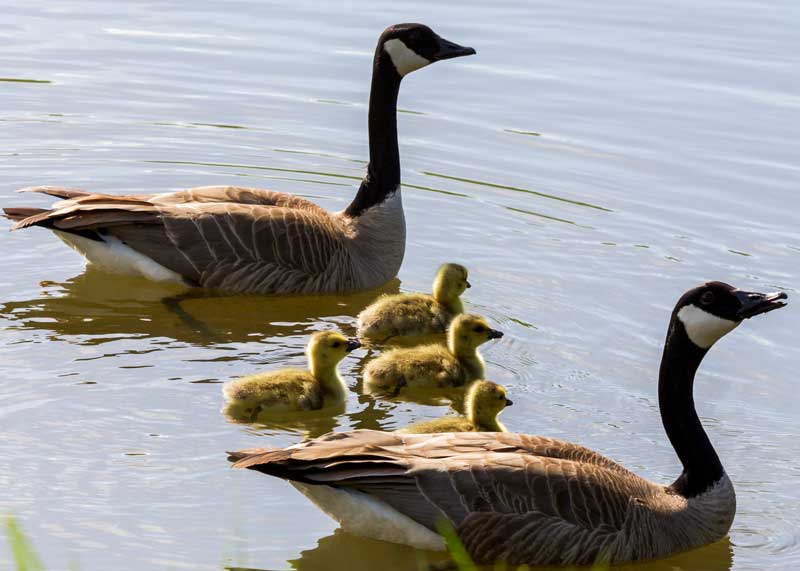
11. Albatrosses (Diomedeidae family)
These large sea-birds reach sexual maturity at around five years of age. But they may wait up to another 10 years before selecting a mate. In the meantime, they practice dancing- a valuable breeding ritual.
An albatross will return to the same island that it was hatched on to find a prospective mate.
In the first year of returning home, an albatross will dance with many fellow albatrosses. But after a number of years, it will choose one. That bond will last for the rest of their lives.
Learn more about the waved albatross.
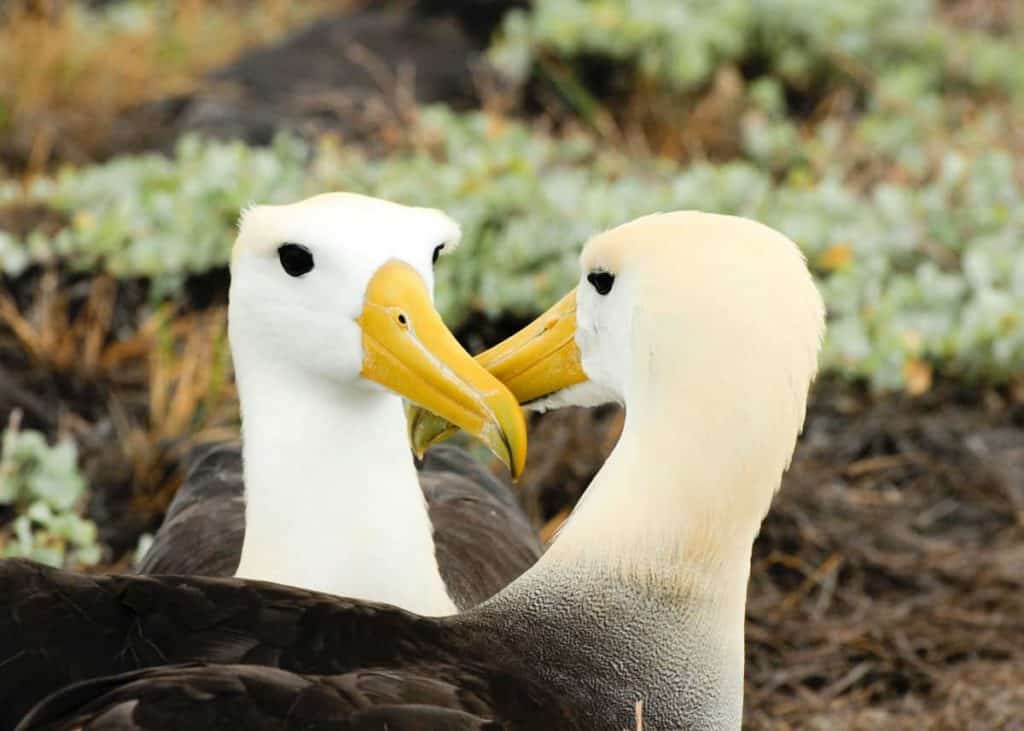
12. Oldfield Mice (Peromycus polionotus)
These sweet little mice waste no time in finding a mate. Females reach sexual maturity at 30 days. You read that right, days!
And they are able to produce a new litter of their own every 30 days. That’s a lot of baby mice. Good thing Mr. Mouse is there to help out.
13. Scarlet Macaws (Ara macao)
As mentioned at the outset, scarlet macaw are known for living long lives side-by-side with their mate.
Macaws will show their affection by holding feet, preening each other, and talking to each other.
And if they are feeling particularly romantic, they will regurgitate into each other’s mouths. Yum.
14. Australian Seahorses (Hippocampus whitei)
Sometimes referred to as “the swingers of the sea” seahorses, in general, are not known for their faithfulness to a mate.
But Australian Seahorses are the exception. It’s hard to find a mate due to the fact that they cannot swim very well, and they have a low population density.
So once a male and female find each other, they stick close to each other. As an added bonus (for the female), the male is the one that gives birth.
15. Gentoo Penguins (Pygoscelis papua)
Like most penguins, the Gentoo Penguin is monogamous. One of the exceptions to that rule is the Emperor Penguin, who (because of a narrow mating window) takes whichever female is available at the time.
The Gentoo takes the time to woo his mate, presenting her with a pebble. If she accepts his advances, they will build a nest together.
The pair will breed together year after year. Interestingly, infidelity is often punished by banishment from the colony.
16. Black Vultures (Coragyps atratus)
Like many other bird species, Black Vultures are monogamous. But what makes these vultures special is how that monogamy is enforced.
If one of the partners is caught “cheating” away from their nest, the rest of the flock will attack them, forcing them to go back home. That’s one way to dissuade infidelity!
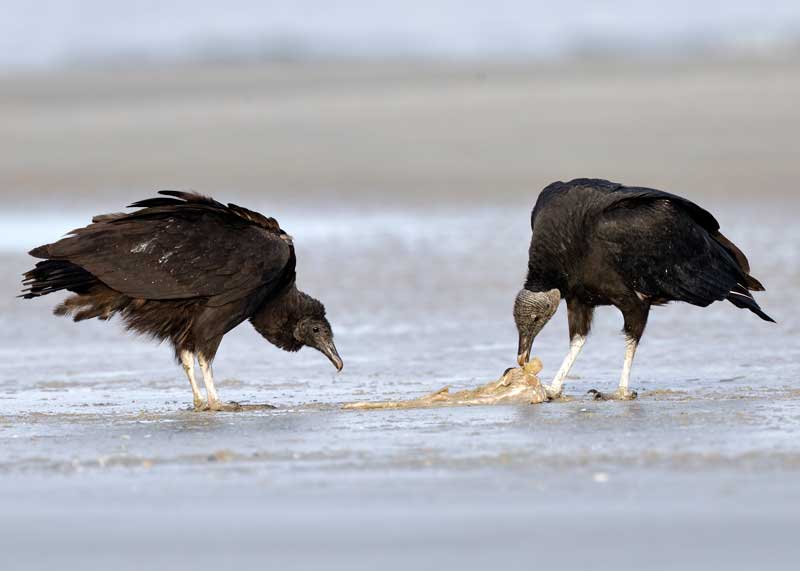
17. Hawksbill Sea Turtle (Eretmochelys imbricata)
A female sea turtle will lay multiple nests within a few months. All of these eggs will have the same father.
An interesting fact is that she can store sperm for up to 75 days, without the need for mating multiple times.

18. Mantis Shrimp (Stomatopoda order)
Found deep in the waters of the Pacific ocean is a special kind of sponge called the Venus’ Flower Basket. When this sponge dies, it leaves behind a beautiful silica skeleton.
When young, a male and female shrimp will enter this “glass house.”
They stay there to start their family, and at some point grow too big to get back out.
Their offspring are small enough to leave, but mom and dad are imprisoned there for the rest of their lives. “Until death does us part.”
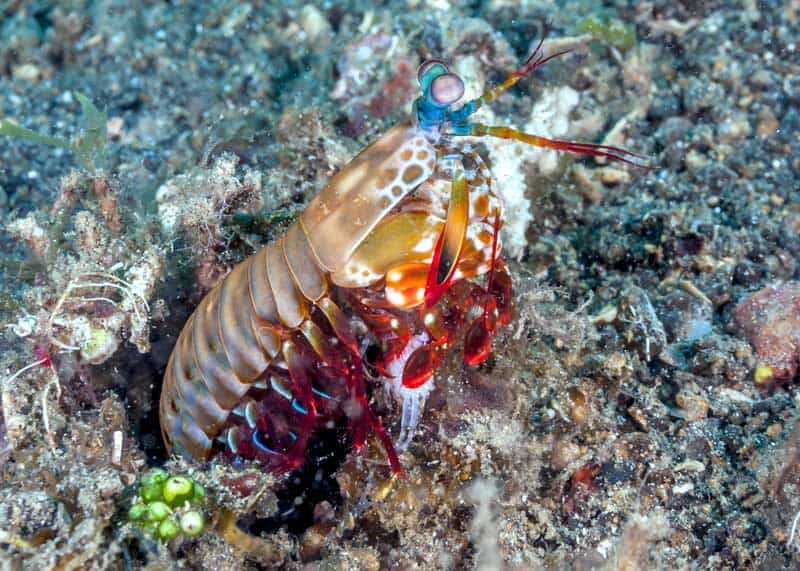
19. French Angelfish (Pomacanthus paru)
Monogamy is rare among fish, but for the French Angelfish, there are many benefits. The two work together in defending their territory.
Both parents help care for the spawn. And because it can be hard to find a mate, a pair of angelfish no longer have this concern.
20. Shingleback Lizards / Skinks (Tiliqua rugosa)
These slow-moving “Sleepy Lizards” are one of the few reptiles that return to the same mate year after year.
One pair that was under observation had been together for 27 years. Courtship can be awkward, so the Shingleback chooses to stay with the mate that has already won them over.
21. Parasitic Flatworms (Diplozoon paradoxum)
So flatworms are pretty disgusting, but I had to include them on this list for their uniqueness factor.
They live in freshwater fish in Asia and Europe. While they are born as individual male and female larva, they can mature and continue to live only if they literally fuse themselves together.
This fusion is so complete that there is no sign of separating partitions. This takes “becoming one flesh” to a whole other level.
22. Titi Monkeys (Callicebinae subfamily)
Titi Monkeys are known not only for their love, but also for their jealousy.
Male monkeys will even physically hold back their mate to prevent them from interacting with other males.
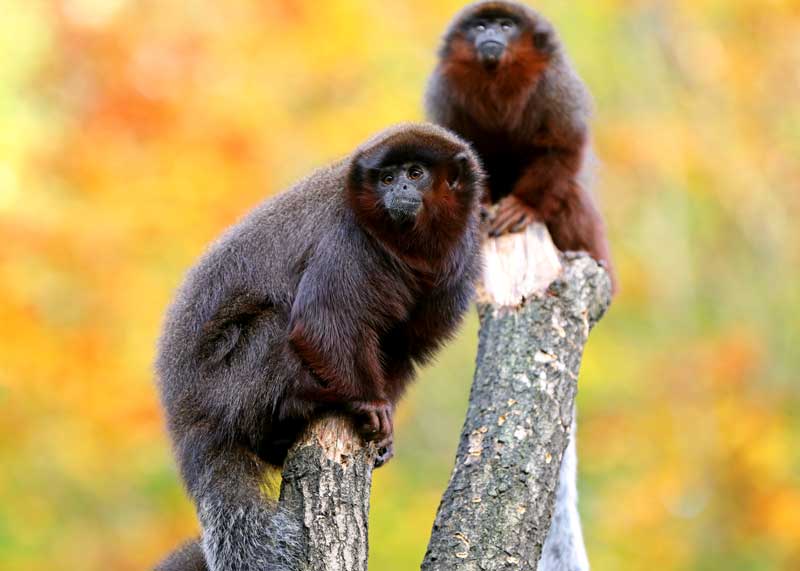
Other Notable Mentions:
- 23. Dik-Dik (a tiny antelope)
- 24. Monk Parakeets
- 25. California Condors
- 26. Love Birds
- 27. Pigeons
- 28. Barn Owls
- 29. Red and Gray Foxes
Here are 8 birds that mate for life.
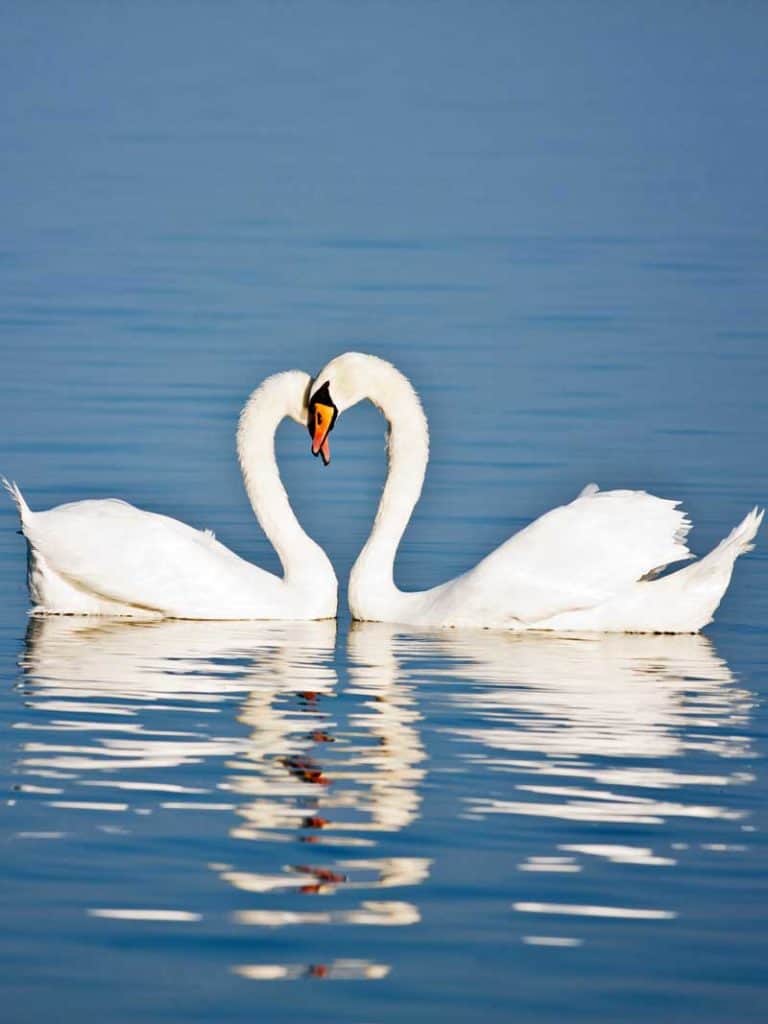
Your Turn:
Which one of these animals is your favorite? Do you know of a monogamous animal that isn’t on my list? Please let me know in the comments below.







Cockatiels, most species of doves
Impressive list! To my knowledge loons are monogamous as well
@Jill, this is gonna make me sound stupid based off how you casually set it but what is a loon.
@Cian (don’t even try to pronounce),
Loons, which are the size of large ducks or small geese, resemble these birds in shape when swimming. Like ducks and geese, but unlike coots (which are Rallidae) and grebes (Podicipedidae), the loon’s toes are connected by webbing. The loons may be confused with the cormorants (Phalacrocoracidae), but can be distinguished from them by their distinct call. Cormorants are not-too-distant relatives of loons, and like them are heavy-set birds whose bellies, unlike those of ducks and geese, are submerged when swimming. Loons in flight resemble plump geese with seagulls’ wings that are relatively small in proportion to their bulky bodies. The bird points its head slightly upwards while swimming, but less so than cormorants. In flight, the head droops more than in similar aquatic birds. Wikipedia. I tried to post a pic for you but couldn’t.